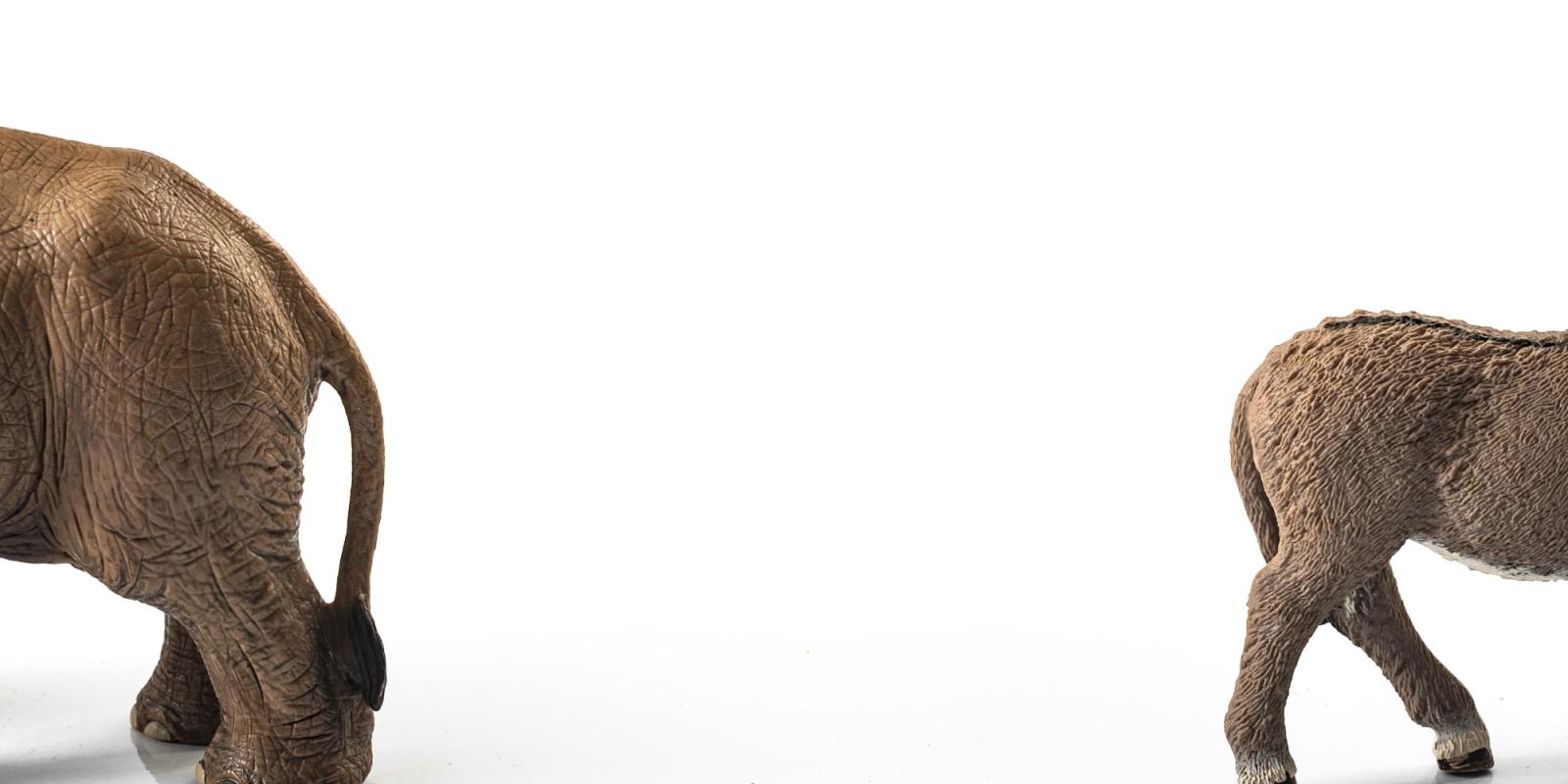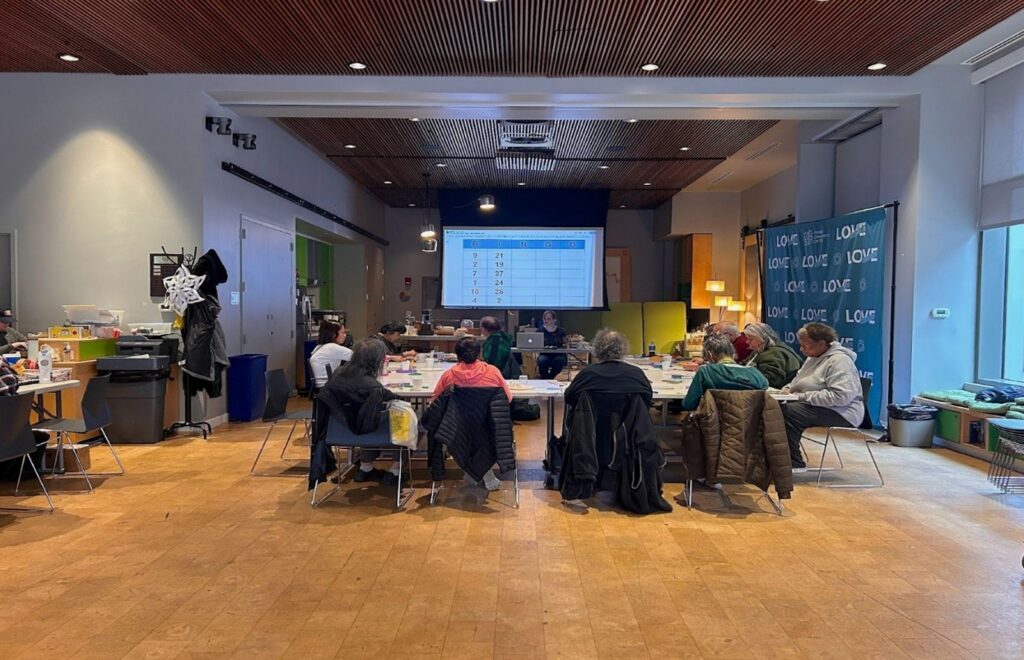A common belief about the relationship between party affiliation and age is simple: the older you get, the more Republican you become. This relationship has been observed in many national surveys and election exit polls, making the public circulate it as a confirmed truth. This association is generally consistent with the life-course theory of political attitudes.
During the transition from adolescence to young adulthood and middle age, people become increasingly engaged in political and economic matters through their employment, when establishing new businesses, or in forming a family, which results in them being less idealistic but more practical in their political decisions. Once shifted, beliefs may sustain or become increasingly conservative as people age, because there is less room for further socialization, which might encourage other beliefs, and higher economic and social stability as wealth and prestige accumulate.
However, our knowledge about the mechanisms of this age-related pattern remains limited, especially if we look at the trend in old age. This is partly because the primary focus of political scientists has been more on the periodic changes in political environments and their implications on the results of elections, after controlling for the “general” trend of aging. More importantly, the study of older adults was somewhat marginal in political science until the late 20th century, possibly due to elders’ smaller share in the population and their less active participation in electoral politics compared to their younger counterparts. In the past, this scholarly trend had paralleled the rise of the “disengagement theory,” which assumed that a decrease in civic engagement is a natural consequence of aging.
Major Demographic Shift Alters Voting Patterns
Recently, the U.S. society is experiencing a major shift in both ways: the share of people ages 65 or older is expanding, and the age-related trend of civic engagement—measured by voting—is no longer diminishing but remains almost flat from midlife). These results call attention to how essential the attitudes and behaviors of older adults are as a part of U.S. politics.
Many assume that with age comes conservatism, but there are at least three reasons why the positive relationship between age and becoming more conservative (i.e., voting Republican) needs clarification. First, as consistently discussed among political scientists, the association between age and party affiliation may be an artifact of the period—changes in party affiliation due to concurrent social, economic and political events; or cohort trends—differences in party affiliation due to distinctive life-course experiences of those born in certain years.
The study of older adults was somewhat marginal in political science until the late 20th century.
Much of what we know about the age-related trend of party affiliation is from repeated cross-sectional surveys. These surveys are based upon probabilistic samples of the U.S. population that are newly recruited at each time point—where the age-related patterns are assessed by the differences between age groups from different periods.
The age difference can be assessed by 1. the comparison of those in their 50s and 60s in 2000, which may arise from the different life courses of those born in the 1950s and 1940s; or 2. the comparison of those in their 50s in 2000 and 60s in 2010, which may be attributable to different political environments between 2000 and 2010. Thus, the interpretation of there being more Republicans among older age groups is open to multiple dimensions of temporal dynamics.
This complexity may allow us to think about aging from a different point of view: instead of there being a single and independent trajectory of aging into older adulthood, we can redefine aging as multiple trajectories that are distinctive to certain birth cohorts. Each aging trajectory is distinctive in the sense that it consists of cumulative experiences of periodic political events, and the composition and exposure timing of such events are unique to each birth cohort.
For example, a report in 2015 shows that the trends of being Republican differ quite a bit between Baby Boomers, Generation X and Millennials. Specifically, when comparing political behaviors of these three cohorts in their young adulthood (i.e., when they were 12th graders and college students), Millennials are more conservative in both political views and party affiliation than the other two generations. These trends imply that their political opinions and decisions afterwards may also follow different pathways, and thus provide motivations for identifying cohort-specific aging trajectories.
Second, such studies should be differentiated between “age differences” and “aging” of party affiliation. The study based on repeated cross-sectional datasets is problematic in two regards. First, this approach may not directly incorporate the changes in the composition of age groups. Specifically, older age groups consist of those who survived to certain age thresholds, which can produce certain age-related trends solely by the selection on the risk of death. If the selection leans toward those who are healthier and wealthier, it would favor more Republicans, the observed age-related pattern may be largely attributable to the compositional changes of older age groups.
‘We can redefine aging as multiple trajectories that are distinctive to certain birth cohorts.’
Second, this approach does not give us any information about changes in party affiliation at an individual level, making it difficult to assess if the trend is due to consistent changes to or from Republican views, or constant fluctuations of individual political decisions. We can address these limitations only when we follow up with a group of people throughout the aging process, and this type of data is available from only a few cohorts in selective regions.
Third, the focus on the trend of party affiliation may leave some important dimensions of political aging uncovered. A handful of recent studies using longitudinal datasets show that shifts in party affiliation are not uncommon—particularly from Democratic to Republican—throughout the life course, whereas political opinions rarely change, especially in later life (see also Peterson, Smith and Hibbing, 2020).
Age Differences in Political Opinions Differ Between Parties
More interestingly, age differences in political opinions are not the same among Democrats and Republicans: a report in 2019 shows that age divides in political views are pronounced only among Republicans, especially due to the more conservative views of the older generations on immigration, same-sex marriage and environmental issues; whereas Democrats have similar opinions over diverse political issues, regardless of age.
These findings imply that being a Republican in later life in itself is not enough of a litmus test to assess the political consequences of aging. We need to answer the following questions: Who becomes a Republican in old age? If the change of affiliation is mainly from older Democrats equipped with already conservative views, would this be a permanent shift or a temporary reaction to periodic socioeconomic circumstances?
Considering that political opinions are becoming more liberal on average in the United States, would the younger cohorts with more liberal views experience similar or distinctive political transitions in later life?
Ultimately, the changes in political ideation and attitudes should be viewed as a continuum of civic participation, as a process promoted and constrained by individual capacities and political structures for consistent engagement with politics. From these perspectives, the age-related trend of party affiliation leaves many important and unresolved questions for us.
Won-tak Joo, PhD, is an assistant professor in Sociology and Criminology & Law at the University of Florida, in Gainesville.
Photo: Victor Moussa













